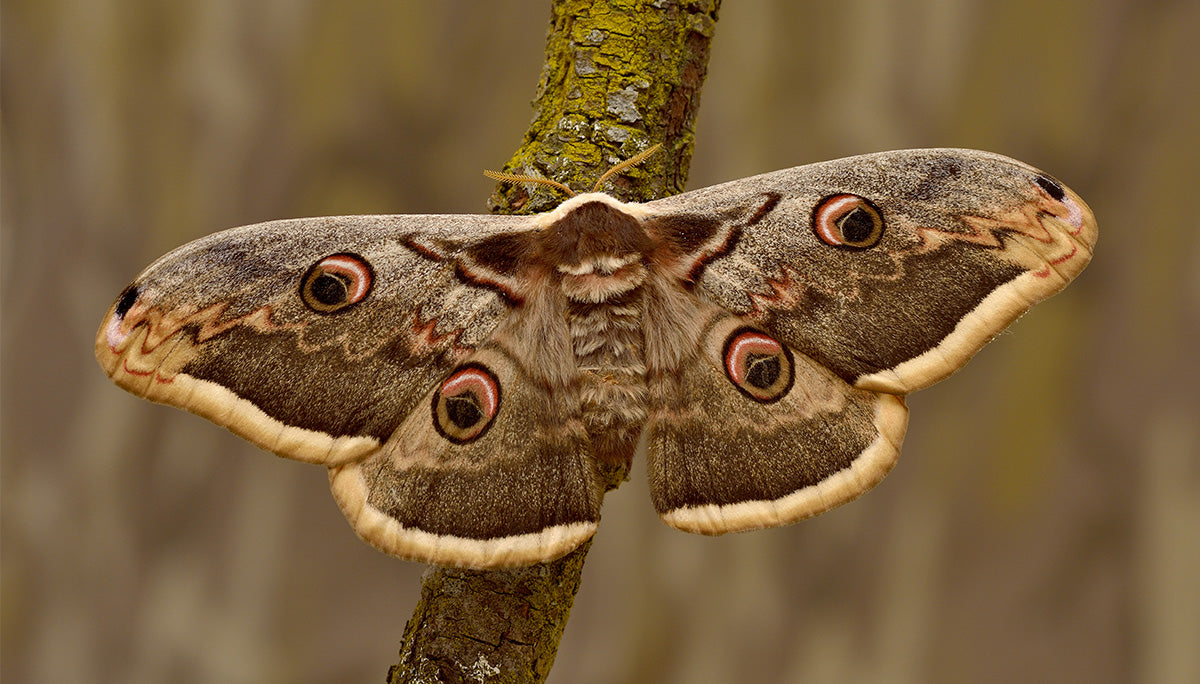April 28, 2018
Hi Tomoo, how have you been? Anything new since our last collaboration?
Yes. I have to say thank you for letting me compose Nightingale for Zoologist. It opened the door for me as a perfumer, and led to my second perfume creation, Tuberai, for a new brand called Beau Kwon based in California. Tuberai is one of three fragrances they released this spring.
That’s great! You are very talented, and you definitely should create more perfumes for the world!
Let’s talk about Moth. Shortly after our first collaboration in 2016, you sent me a few perfume prototypes for consideration. One of the them was called “The Night”, if I remember correctly?
It was my original composition, Kagaribi (The Cressets / Watchfire), which was inspired by an old Japanese poem, the same way Nightingale was.
The poem was written by Onakatomi no Yoshinobu Ason (大中臣能宣):
みかきもり
衛士のたく火の
夜はもえ
昼は消えつつ
物をこそ思へ
Like the warder's fires
At the Imperial gateway kept,
Burning through the night,
Through the day in ashes dulled,
Is the love aglow in me.
I see burning fire in darkness in this poem. I tried to express this with labdanum, patchouli, rose and a spice accord.
I liked that prototype instantly. It did smell dark, mysterious and a little powdery. And I think the spice accord you built was very novel. It’s strong and unconventional. You suggested calling it “Black Panther” if it was published under Zoologist. However, I had had a hard time picturing that spice accord being called “Black Panther”. I immediately thought about calling it Moth! What was your reaction?
I thought the name “Moth” didn’t sound very cute!
In the original formula, I used many spices from India, which led me to form an impression of a black panther. However, now I think “Moth” is a better fit than “Black Panther”. If it was released as Black Panther, you might have a hard time acquiring the trademark because of the recent release of the movie of the same title, even though the perfume was created a year and a half ago.

I always wanted to create a “smoky and powdery perfume”, and for a very long time I couldn’t come up with an animal whose characteristics had any association with smoke. But with that prototype, I could picture adding a smoky accord to the base to symbolize a moth flying towards flames and killed by them. It’s a bit tragic, but I think it suited the perfume’s overall mood. In Japanese culture, there is a lot of folklore around moths, correct?
In Japan, we have a proverb: “Like a moth flying into the flame”. That image fits perfectly for this perfume composition, for it reminds me of a person burning him/herself in a fire of everlasting love. By the way, I guess many Japanese would associate Moth with the movie, “Mothra vs. Godzilla”!
I want to talk about the three major accords you built for Moth. Let’s talk about the top notes first.
The opening is quite spicy, but I never feel it that much. I just wanted to create an impression of an image of burning fire with crackling sounds, and I thought I needed to use not only some smoky notes, but also spices. As you might know, it is trendy to incorporate cumin in perfumery, but it is never easy to use it effectively. I tried different materials, including natural cumin oil and the aroma chemicals cuminaldehyde (or cumin nitrile) to achieve the result I wanted. Oh, do you remember the early prototype that was overdosed with cumin? You said it smelled like the Chinese dish Beijing Duck!

For the middle notes, you have built a very interesting flower accord. I believe the powderiness of the perfume comes from this accord. I’d like to associate it to the little scales on the wings of a moth.
I used heliotropin and iris to express the scales on a moth’s wings. And I added a red rose accord (the same accord used in Nightingale) for the “passion” with other florals, too. Moth contains a lot of flowers, more than people would imagine. I needed them to make the composition softer in order to unite the notes.
I thought the smoky base accord was fantastic – it’s woody, sweet, additive, and a little “high pitch”. It almost smells like a thin, very focused funnel of smoke shooting high up to the sky. How did you achieve that effect?
Generally, birch tar and cade oil are used in perfumery to express smokiness. But I chose Guaiac wood oil instead, which itself has a spicy and smoky touch. It was a perfect fit for Moth. I also used the earthy-smelling nagarmotha (it’s widely used in oud compounds) and Indian vetiver (called Khus in India) that was matured in copper pots. Together, all those create a unique smell.
I have received some interesting and opposing feedbacks from people who have smelled Moth. Some think it’s feminine, some think it’s unisex, some think it’s very modern and avant-garde, some think it’s retro. How do you describe Moth? Who do you think will wear it well?
It has a feminine side and a unisex side, and also a masculine part! Maybe classical, or maybe modern! As you know, a fragrance has many different aspects, so people can feel anything and never be wrong, meaning all feedback gives perfect answers. I am a fragrance maniac, so I'll be happy to learn that anyone who is bored with mainstream products chooses to wear Moth!
By the way, I must say thank you to the illustrator. I am so grateful for her artwork. Her illustration turned the Moth into something cool and cute!
Thank you very much!
